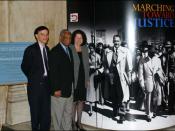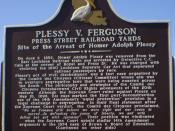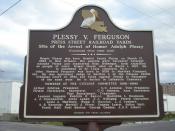The way that people viewed the issue of segregation in public schools changed over time. The change with regard to segregation in public schools and the need for Plessy v. Ferguson to be overturned became more clear and concrete over time. You can trace this change through three documents, the Harlan dissent to Plessy (1896), Petitioner's Brief to Sweatt v. Painter (1950), and Appellants' Brief and Appendix to Brown v. Board of Education (1952). Although these three documents come from different times and cases, they all have one important thing in common, they agree that the Plessy decision not only needs to be change, but someday will be changed. You can tell that as time goes on, the need and desire to have the Plessy decision gets stronger, and the evidence to do so also becomes stronger and more compelling.
The Harlan dissent to Plessy comes right after the Plessy decision is made.
Justice Harlan wrote the Harlan dissent. Harlan believed that the Constitution is "color blind". He believed that civil rights should be and are common to all citizens. He argued that everyone is equal in the eyes of the law, and the law has no right to decide that a certain group should have more or less civil rights than another. Harlan believed that just after the Plessy decision was made that it would later be overturned. He said, "The destinies of the two races, in this country, are indissolubly linked together" . Harlan knew that eventually the two races would be seen as equal and always should be; we are all going to end up in the same place in the end. Harlan also knew that laws, such as Jim Crow laws, were not made to make things separate, but to discriminate against African Americans, and to...


